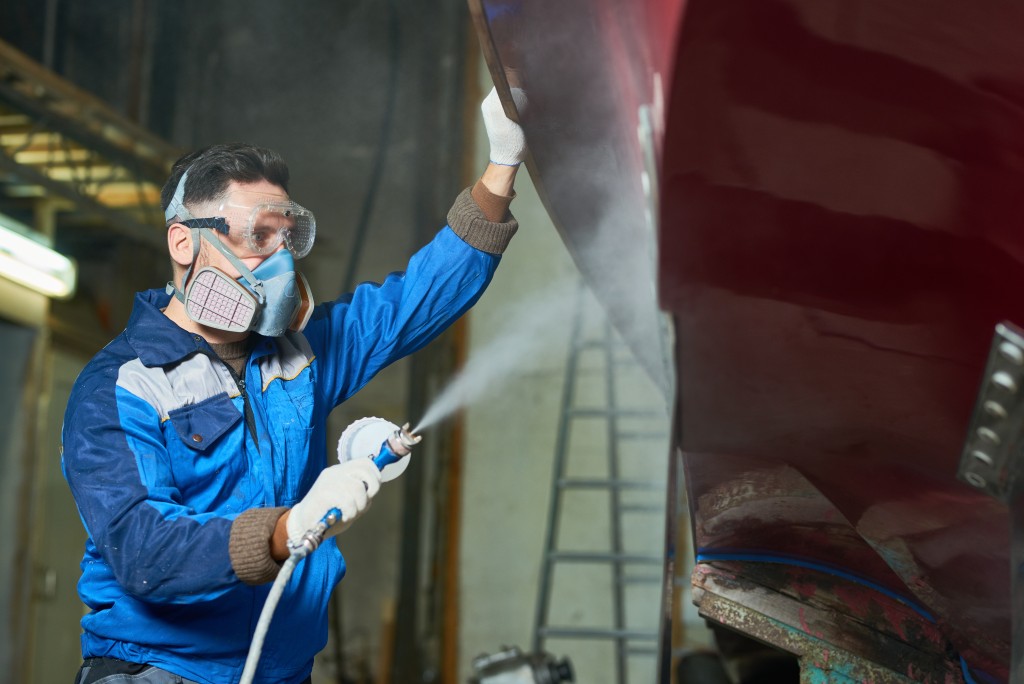Painting is one of the most time-consuming parts of the construction process, and using a paintbrush or roller is a massive waste of time and energy. If you want to get the job done fast, you need to call in the big guns. A paint sprayer offers better results at a fraction of the required time. You can now apply the undercoat in under 10 minutes with minimal running. You can also reach places that no brush or roller has gone before.
Whether you’re a professional painter or a homeowner with a lot of time on their hands, it pays to know the basics of painting a room. Painting requires a bit of training and preparation, but once you’ve gotten the hang of it, you can finish paint jobs in no time. Here are a few tips and tricks to get you started.
-
Contents
Prepare the room
You need to prepare the room before starting any pain job. Safety is your main priority, so start by clearing the room of tripping hazards and objects where the hose might get snagged.
Hire a house clearance service to remove all the furniture and store them away from the painting area. This gives you more room to maneuver and protects the pieces from paint splatter.
Cover all surfaces you’re not going to paint over such as floors, windows, and the trim. Use masking tape to cover these areas off or protect them with a drop cloth or newspapers.
-
Start with water
If it’s your first time using a spray painter, make sure to use water first for practice. Use this time to learn proper spraying movement. Once you feel you’ve gotten the hang of spray painting, you can then fill the tank with real paint. Practice spraying a few times on a piece of cardboard first. Adjust the pressure settings accordingly to get the desired spray.
-
Know when to spray
There is a right time and a wrong time to use a sprayer. You have to wait for the right conditions before working. First, clear the area of people to avoid distractions and possible interference. If you’re working outdoors, do not spray paint if it’s raining.
Do not use the sprayer if the temperature is too cold or too hot. Do not paint in direct sunlight too, as the exposure to heat can cause the paint to dry too quickly. If it’s too cold out, the drying process is slower, which may cause dirt and bugs to stick to your painted surface.
-
Stir the paint
One of the main culprits behind a clogged nozzle is poorly mixed paint. You can reduce the chances of paint clogging the machine by stirring the paint well and straining it before using it. Stop spraying if the temperature suddenly drops, as the paint will start to congeal.
-
Apply a thin coat
 Do not apply a heavy coat to the surface. Sometimes, it’s better to start with a light coat and adding some more than to apply a heavy coat that’s impossible to remove. A heavy coat dries slower and may sag in some areas. It may even peel off after a period of time.
Do not apply a heavy coat to the surface. Sometimes, it’s better to start with a light coat and adding some more than to apply a heavy coat that’s impossible to remove. A heavy coat dries slower and may sag in some areas. It may even peel off after a period of time.
-
Sand the surface first
Spray painting ensures maximum coverage but the result won’t be as nice if the surface is rough and uneven. If you want a smooth, even finish, make sure to sand the surfaces with sandpaper. Sand the area until it feels smooth and flat to the touch.
-
Use a different sprayer for each coating
You need to use separate sprayers for every step of the painting process. If there’s room in the budget, buy a spray gun for primers and surfacers, basecoats, and clearcoats. There’s nothing more annoying than having some leftover basecoat stain the surface while applying the clearcoat. Having multiple sprayers will prevent mixups from happening.
A final word
These seven tips will help you paint faster and more efficiently. Make sure to clean the air sprayer after use, before switching paints, and if there’s a long break between two painting sessions.
If you’re not sure how to clean a paint sprayer, you can always check the manual watch video tutorials. Never use your exposed fingers to clean the tip. Accidental spraying can inject paint into your skin.
